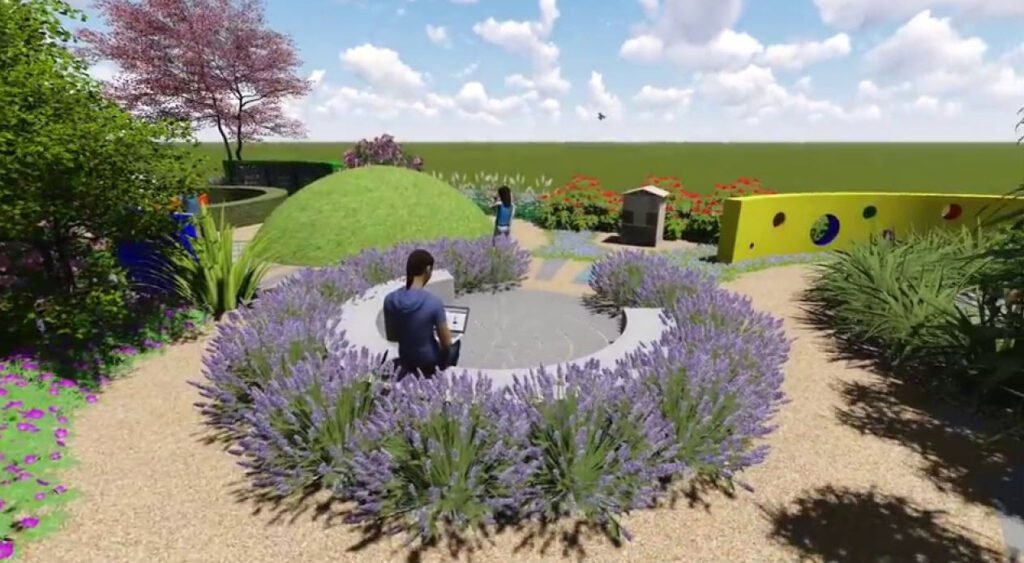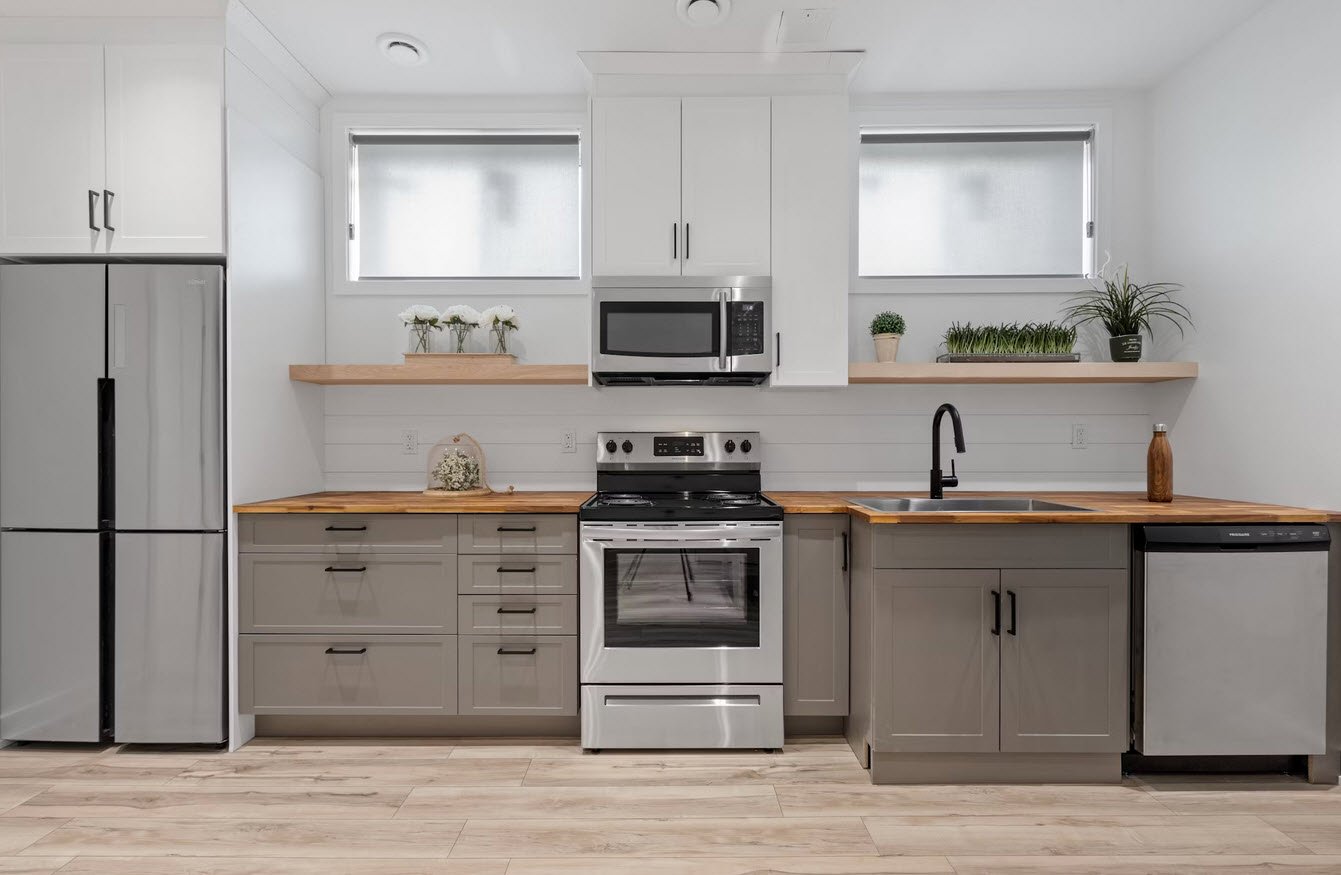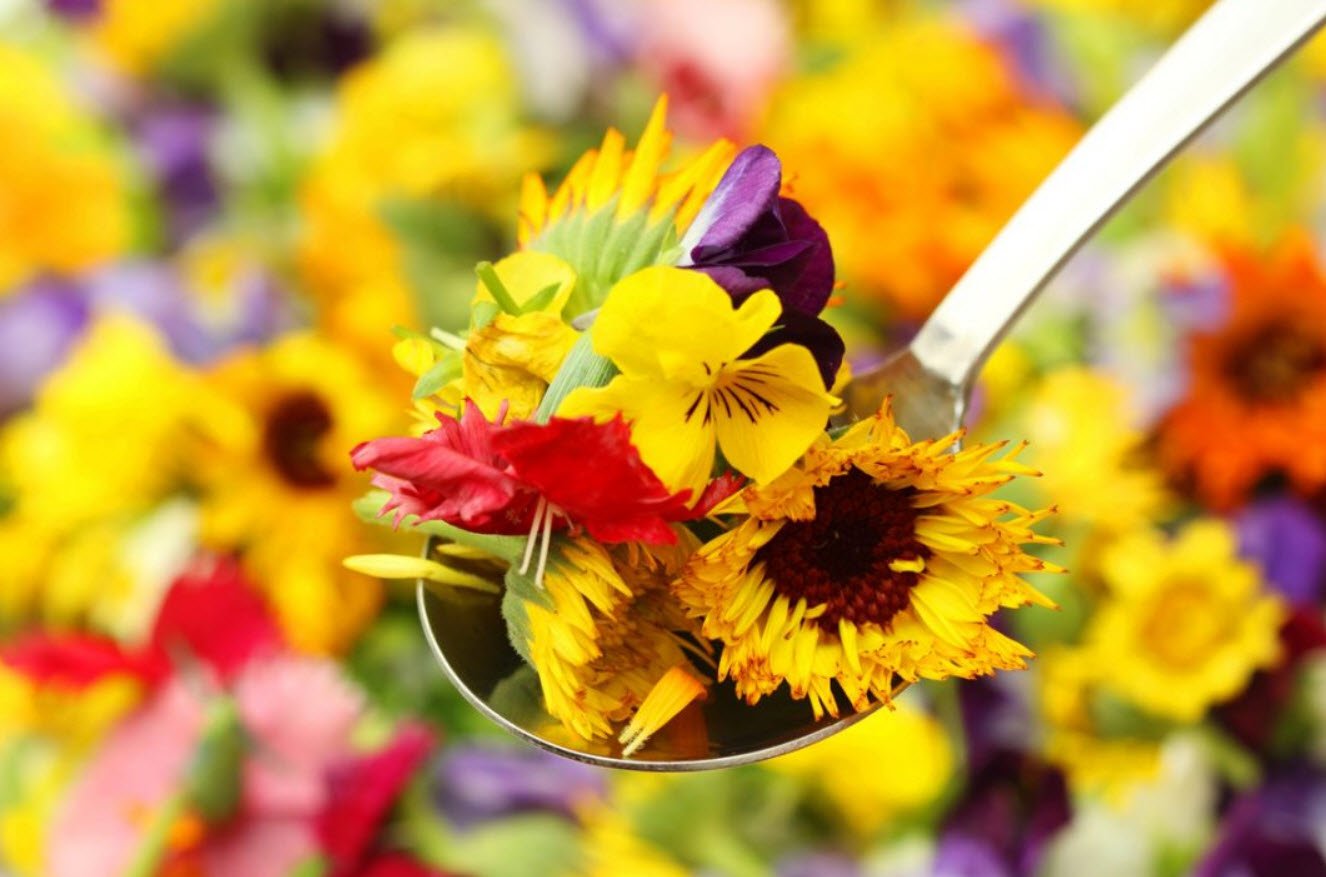
A sensory garden is a type of garden designed to stimulate and engage the senses, often including plants with different textures, colours, scents, and tastes. It can provide a therapeutic or educational experience for people with disabilities, sensory impairments, or simply for anyone who wants to experience nature in a unique way.
1. Water Features
Water features are elements in a landscape design that incorporate water as a decorative and functional element. Examples include fountains, waterfalls, ponds, and streams. Water features can add visual interest, create a soothing sound, and provide a habitat for aquatic plants and animals.
They can be designed in a variety of sizes and styles to suit different outdoor spaces and personal preferences.
2. Scented Flowers
Scented flowers are flowers that produce a pleasant fragrance. Some examples of scented flowers include roses, lavender, jasmine, lilacs, and hyacinths. The scent of these flowers can be used for aromatherapy, perfumes, and essential oils.
Scented flowers can also attract pollinators such as bees and butterflies, which can benefit the ecosystem of a garden.
3. Stepping Stones
Stepping stones are flat stones or pavers used to create a path or walkway in a garden or outdoor space. They can be made from a variety of materials such as natural stones, concrete, or wood. Stepping stones can serve both functional and aesthetic purposes, allowing people to walk through a garden without damaging delicate plants, and creating an interesting design element in the landscape.
They can be arranged in a variety of patterns and shapes, and can be used to complement the overall style and feel of a garden or outdoor space.
4. Plants in Patio
Plants in a patio can add beauty, colour, and texture to the outdoor space. When choosing plants for a patio, it is important to consider factors such as the amount of sunlight the patio receives, the size of the plants, and the overall style of the patio.
Some popular plants for patio gardens include:
- Succulents: These plants are drought-resistant and come in a variety of interesting shapes and sizes.
- Herbs: Herbs like basil, thyme, and rosemary are easy to grow in containers and can be used for cooking.
- Annuals: Annual flowers like petunias, marigolds, and impatiens can add a pop of colour to a patio garden.
- Ferns: Ferns are shade-loving plants that can add a lush, tropical feel to a patio.
- Climbing plants: Climbing plants like ivy and clematis can be trained to grow up trellises or walls, adding vertical interest to a patio garden.
5. Corten Steel
Corten steel is a type of weathering steel that is designed to rust and develop a protective layer of rust-coloured patina over time when exposed to the elements. It was first developed in the 1930s for use in railway coal wagons and has since become popular in architectural and landscape design due to its unique appearance and durability.
Corten steel is often used in outdoor sculptures, building facades, retaining walls, and garden planters. Its natural rusted appearance can add an industrial, modern, or rustic look to a landscape design.
6. Pathways or Curved Beds
Pathways and curved beds are two different landscaping elements that serve different purposes. Pathways are designed to provide a clear and defined route for people to walk through a garden or yard. They can be made of various materials such as gravel, pavers, or natural stone and can be straight or winding, depending on the desired aesthetic.
Curved beds, on the other hand, are designed to add visual interest and organic shapes to a garden. They are often used to soften the harsh lines of a building or landscaping, and can be planted with a variety of flowers and plants to create a natural and flowing look.
Ultimately, the choice between pathways or curved beds will depend on the specific needs and desired style of the garden. Both can be used in conjunction with each other to create a beautiful and functional outdoor space.
7. Roses
Roses are a popular and versatile flowering plant that come in a wide range of colours, sizes, and varieties. They are often used in gardens, landscaping, and cut flower arrangements. Roses require regular watering, adequate sunlight, and well-draining soil. They can be propagated through cuttings, and should be pruned annually to promote healthy growth and blooms.
There are many different types of roses, including hybrid tea, floribunda, grand flora, miniature, and climbing varieties. Each type has its own unique characteristics, such as bloom size and shape, plant size and habit, and disease resistance.Roses have a long and rich history, and have been celebrated in art, literature, and culture for centuries.
They are often associated with love and beauty, and are a popular choice for romantic occasions such as weddings and Valentine’s Day.
8. Texture Plants
Texture plants are plants that have distinctive physical characteristics that add visual interest and variety to a garden or landscape. These characteristics can include variations in leaf shape, size, and colour, as well as differences in stem texture and overall plant form.
Examples of texture plants include ornamental grasses, such as fountain grass or feather grass, which have long, slender leaves that add movement and texture to a garden. Other examples include succulents, such as hens and chicks, which have unique leaf shapes and textures, and hosts, which have large, textured leaves that can provide a lush and tropical feel to a shady garden.
Texture plants can be used to create contrast and balance within a garden, and can be incorporated into a variety of design styles, from formal to naturalistic. They can also be combined with other design elements, such as colour and form, to create a cohesive and dynamic outdoor space.
9. Garden Furniture’s
Garden furniture refers to outdoor furniture that is designed specifically for use in a garden or other outdoor space. It can include a variety of seating, dining, and lounging options, as well as decorative elements such as planters and garden sculptures.
Common types of garden furniture include chairs, benches, tables, and lounges, which can be made from a variety of materials such as wood, metal, wicker, and plastic. Outdoor cushions and pillows can also be added to provide additional comfort and style.
When choosing garden furniture, it’s important to consider the specific needs and style of the outdoor space. Factors to consider include the size of the space, the amount of sun and shade, and the intended use of the furniture. In addition to providing functional seating and dining options, garden furniture can also add style and character to a garden or outdoor space.
It can be used to create a specific design style, such as modern or traditional, or to enhance the natural beauty of the surrounding landscape.
10. Mirrors and Lighting
Mirrors and lighting are important elements in interior design that can help enhance the look and feel of a space. Mirrors can create the illusion of more space and add depth to a room. They can also reflect light and other elements in the room to create interesting visual effects.
Mirrors can be used as a focal point, or can be strategically placed to highlight artwork or other decorative elements. Lighting can also be used to enhance the atmosphere and functionality of a room. Ambient lighting, such as overhead lights or wall sconces, can provide overall illumination, while task lighting, such as desk lamps or reading lights, can provide more focused and functional lighting.
Accent lighting, such as track lighting or uplighting, can be used to highlight specific features or decorative elements in a room.In addition to serving functional purposes, mirrors and lighting can also be used as design elements in their own right. They can be used to create specific moods or styles, such as modern or traditional, and can be used to add texture, colour, and visual interest to a room.
11. Green
Green is a colour that is often associated with nature, growth, and freshness. It is one of the primary colours in the RGB colour model, which is used to create colours on electronic displays, and is also a common colour in art, design, and fashion.
Green is the colour of many plants and trees, and is often used to symbolize the environment, sustainability, and ecology. It is also associated with renewal and growth, and can be used to represent new beginnings or opportunities. In colour psychology, green is often thought to represent balance, harmony, and stability.
It is believed to have a calming and soothing effect, and is sometimes used in healthcare settings to create a relaxing environment. There are many shades and variations of green, from bright and vibrant hues to more subdued and earthy tones. Green can be paired with a variety of other colours to create different moods and effects, and can be used in a variety of design styles, from modern to traditional.
12. Colourful Flowers
Colourful flowers are a popular and versatile element in garden and landscape design. They can add vibrancy, beauty, and visual interest to a space, and can be used to create a variety of design styles, from formal to naturalistic. There are countless species and varieties of colourful flowers, each with its own unique characteristics, such as bloom size, shape, and colour. Some examples of colourful flowers include roses, daisies, tulips, dahlias, and lilies.
Colourful flowers can be planted in garden beds or in containers, and can be combined with other design elements such as texture, form, and height to create a cohesive and dynamic outdoor space. When designing with colourful flowers, it’s important to consider factors such as sunlight, soil, and water requirements, as well as the overall style and theme of the outdoor space.
Additionally, different colours can evoke different moods and emotions, so it’s important to consider the desired effect when choosing flower colours. For example, warm colours such as red, orange, and yellow can create a vibrant and energetic feel, while cool colours such as blue, purple, and green can create a more calming and serene atmosphere.
Also Read:
- Top 10 Essential Tips For Comfortable Traveling During Pregnancy
- Top 10 Tips When Buying a Used Car Privately in the UK
- 10 Unique Las Vegas Wedding Ideas for an Unforgettable Ceremony
- 25 Essential Beauty Tips You Need To Know
- The 7 Best TED Talks You Need To Know
- Elon Musk Set to Become World’s First Trillionaire by 2027: Report
- The Top 10 Worst Investment Mistakes Since 1876
- Sam Altman’s Advice to College Students and Ambitious 19-Year-Olds
- Top 10 Service Business That Makes You at Least $10K/Month
- Top 10 Websites That You Probably Didn’t Even Know About








